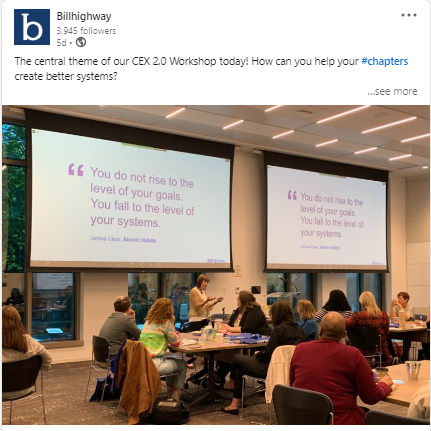The other day I came across a brilliant form of engagement.
It was a pre-onboarding interactive form that the company Typeform sends out to new hires of the company. It does a great job of both preparing their new hire for what’s to come, and gathering the info needed to make sure their first days and weeks are meaningful.
One of the first questions the form asks is if they are relocating for the job. If you answer yes, it then goes through a series of follow up questions, sharing relevant info along the way. They share a list of websites to check out for housing, muse on neighborhoods to avoid, etc.
Clearly the maker of this pre-onboarding form knows how lonely and intimidating a first arrival to a new city can be, and wants to make sure it’s as smooth a landing as possible. It goes without saying how much this will likely lead to happier and more engaged employees.
When I shared this form to my friend and colleague Amanda Kaiser, she said something very insightful:
“I’ve been thinking a lot about the in person and virtual dynamic lately. It feels like people are taking sides – like in-person is always better, and virtual could never replace in-person. But my experience is that virtual first can help make a better in-person experience later. And this is just one more example of how that works.”
Since this is deeply on both of our minds, we each decided to muse on the topic this week. Her post is here.
Amanda got me thinking about the really smart ways that some of our clients are leveraging our platform to provide a virtual experience that both complements their in-person, and reinforces the different ways to engage. Some clients are creating virtual experiences that happen in advance to connect and prepare attendees before the in-person meeting and some clients are designing virtual experiences that happen after the in-person meeting, to continue conversations and re-cap or dive deeper into topics that emerged during the in-person meeting. Let’s look at some examples:
An example of a virtual experience before the in-person meeting:
The Community College Innovation Challenge (CCIC) is a national competition where community college student teams, working with a faculty or administrator mentor, use science, technology, engineering, and mathematics (STEM) to innovate solutions to real-world problems; participate in an Innovation Boot Camp; and compete for cash awards.
This annual innovation challenge is designed as a hybrid event, with an in-person meeting and a virtual hub for attendees to access in advance that includes:
- Virtual welcome and orientation sessions, hosted live but also made available on-demand.
- Digital workspaces for teams to meet and prepare in their own time for their in-person pitches.
- Easy access in one place to the resources that are designed to set them up for success, such as pitch guidelines, judging criteria, and the schedule for the in-person event.
This type of virtual experience is designed to help attendees to connect with each other, collaborate, and prepare together in advance of the in-person meeting. It builds anticipation, enhances interaction between attendees, and facilitates deeper learning and conversations that matter in the in-person meeting.

An example of a virtual experience as a follow-up to the in-person meeting:
The Association Component Exchange (CEX) is a conference designed exclusively for component relations professionals (CRPs). CEX is a forum for association professionals who manage, nurture, and work with chapters to share successes, struggles, strategies, and innovations with their peers. Billhighway and Mariner are soon to launch a virtual follow-up to their in-person CEX workshops, inviting both workshop attendees and their greater network for an expanded audience.
The virtual experience will include:
- On-demand video snippets from the in-person designed to be conversation starters for attendees to expand upon ideas.
- Ways for the community to brainstorm collaboratively and reflect on what they’ve already implemented back at the office.
- Interactive activities and follow-up break out discussions based on the themes unearthed in-person.
This type of virtual experience, sometimes called Audience Extension, is designed to leverage and strengthen the insights generated in-person and extend the experience to include a larger virtual audience. It provides a space for conversations to continue after the event, allowing attendees to make connections that last – with a deeper exploration of the content and to continue building relationships with each other.

Building best-practice together
These last few years have been a period of massive innovation in the event space. In our experience, the organizations that are coming out ahead are the ones that have embraced an expanded toolkit, are putting intent into the design of both in-person and virtual events, and are trying out different ways of bringing new connections and content to their attendees. The good news: since so many people are experimenting at once, we have the opportunity to learn from each other and develop best practices as we tackle new territory together.
The Matchbox team loves to ideate with fellow experience designers and event planners. Time and again we’ve seen how powerful the collective brain is in addressing common challenges. So, whether you’re seeking practical solutions to problems, trying to create or troubleshoot new experiences, or looking for thought partners to share ideas with, we provide an expanded support ecosystem to help you launch your great ideas. If you’d like to chat to us about virtual experiences to enhance your next in-person event, drop us a message using the form at the bottom of this page.

